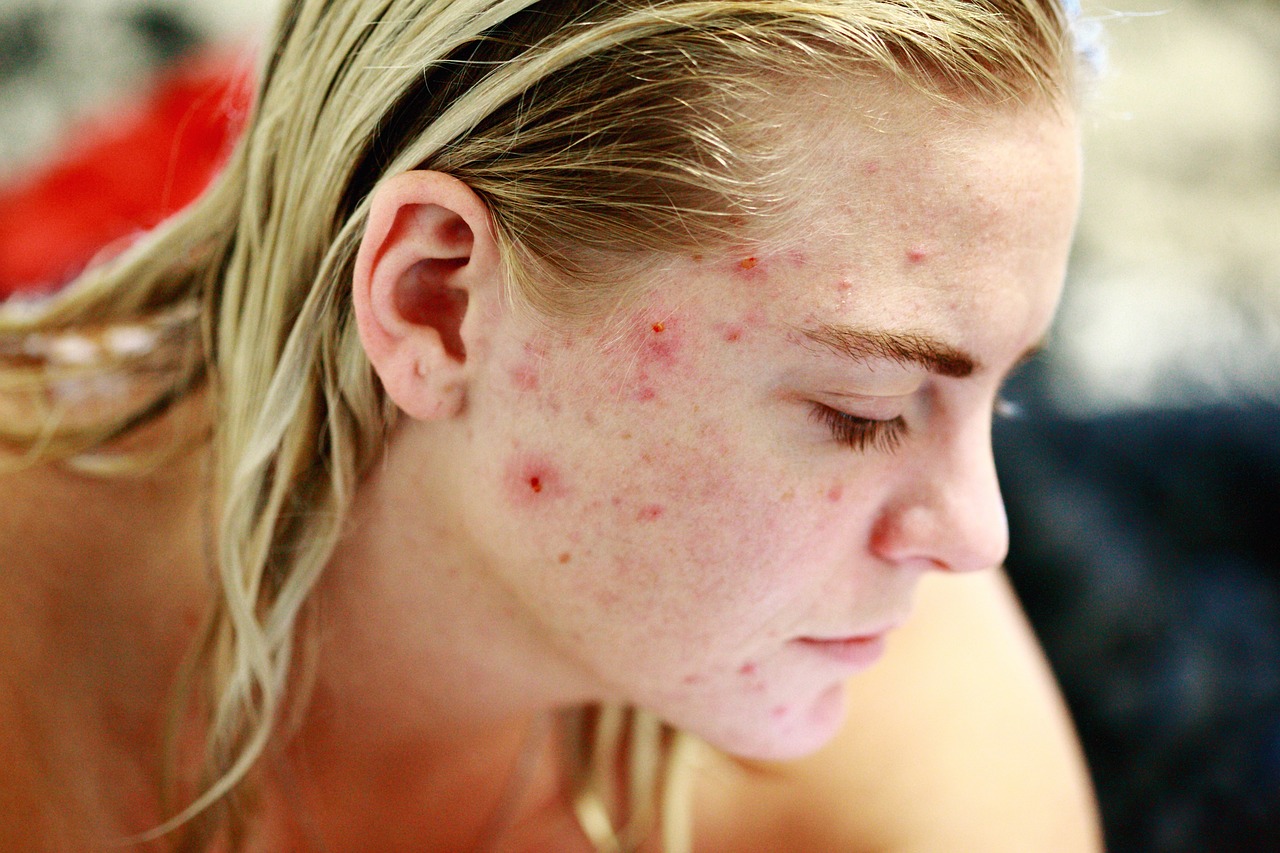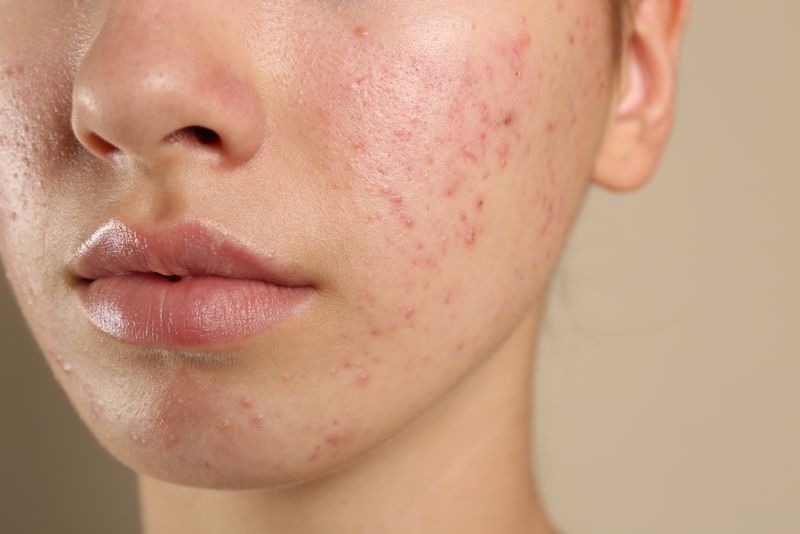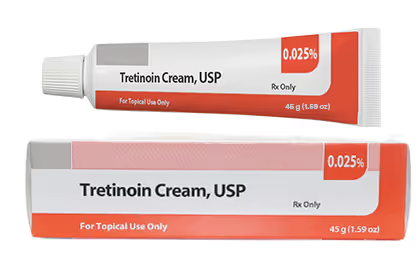Navigating the world of acne treatments can feel overwhelming. With countless options available, from over-the-counter creams to powerful prescription medications, it's difficult to know which path is right for you. One treatment that your dermatology provider may discuss is Duricef, an oral antibiotic that can be highly effective for certain types of acne. While it may not be as commonly known for acne as some other antibiotics, it holds a valuable place in the dermatological toolkit for achieving clear skin.
This guide breaks down everything you need to know about using Duricef for acne. We'll explore how it works, who it's best for, what the treatment process looks like, and how it compares to other common acne therapies. Our goal is to provide you with expert, comprehensive information so you can have a more informed conversation with your provider about your skin health.
What is Duricef (Cefadroxil)?
Duricef is the brand name for a medication called cefadroxil. Cefadroxil belongs to a class of antibiotics known as cephalosporins. This family of drugs is related to penicillin and is widely used to treat a variety of bacterial infections, such as those affecting the urinary tract, throat, and skin. Antibiotics, in general, work by either killing bacteria directly (bactericidal) or by stopping them from multiplying (bacteriostatic). Duricef is bactericidal, meaning it actively destroys the cell walls of susceptible bacteria, leading to their elimination.
While its primary approval is for treating acute bacterial infections, experienced medical providers have long utilized certain antibiotics "off-label" to manage chronic inflammatory conditions, including acne. The use of oral antibiotics in dermatology is a well-established practice aimed at targeting the bacterial and inflammatory components of skin conditions. At Honeydew, our licensed providers are experienced in prescribing a wide range of FDA-approved treatments, including oral antibiotics like Duricef, to create effective and personalized care plans.
How Duricef Works to Treat Acne
To understand how Duricef helps clear skin, it's essential to understand the key factors that cause acne. Acne is a complex inflammatory condition of the skin's pilosebaceous units (hair follicles and their associated oil glands). It's primarily driven by four interconnected factors:
- Excess oil (sebum) production
- Abnormal shedding of skin cells, leading to clogged pores (comedones)
- The presence and proliferation of a bacteria called Cutibacterium acnes (C. acnes)
- Inflammation
Duricef primarily targets the last two factors on this list. Its mechanism of action for acne is twofold, involving both antibacterial and anti-inflammatory effects.
Antibacterial Action
The skin's surface is home to a vast ecosystem of microorganisms, including the C. acnes bacterium. In individuals with healthy skin, this bacterium is a harmless resident. However, in an acne-prone environment—specifically, a pore clogged with excess oil and dead skin cells—C. acnes can multiply rapidly. This overgrowth triggers an immune response from the body, leading to the redness, swelling, and pus characteristic of inflammatory acne lesions like papules, pustules, and cysts.
Duricef, as a systemic antibiotic, circulates through the bloodstream and reaches the skin from the inside out. There, it reduces the population of C. acnes bacteria within the hair follicles. By decreasing the bacterial load, Duricef helps to break the cycle of inflammation, allowing existing pimples to heal and preventing new ones from forming.
Anti-Inflammatory Properties
Beyond simply reducing bacterial counts, many antibiotics used for acne, including cephalosporins like Duricef, are believed to have direct anti-inflammatory effects. This means they can help calm the body's immune response independently of their antibacterial action. They can modulate the activity of neutrophils, a type of white blood cell that rushes to the site of a clogged pore and contributes significantly to the redness and swelling of a pimple. This dual-action approach—tackling both the bacteria and the resulting inflammation—makes oral antibiotics a powerful tool for managing moderate to severe inflammatory acne.
Understanding these mechanisms is central to how we approach treatment at Honeydew. Our providers don't just prescribe a medication; they select a treatment that targets the specific drivers of your acne, ensuring a more strategic and effective approach to care.
Who is a Good Candidate for Duricef?
Duricef is not a first-line treatment for every person with acne. Its use is typically reserved for specific situations where it is most likely to be effective and appropriate. A licensed provider will consider several factors before recommending it.
- Inflammatory Acne: Duricef is most effective for individuals with inflammatory acne. This includes red, tender bumps (papules), pimples containing pus (pustules), and deeper, painful lumps (nodules and cysts). It is generally not the primary choice for purely comedonal acne, which consists only of blackheads and whiteheads.
- Widespread Acne: When acne is widespread, covering large areas of the face, back, chest, or shoulders, topical treatments alone may be impractical or insufficient. An oral antibiotic like Duricef provides systemic treatment, reaching all affected areas of the skin.
- Acne Unresponsive to Topical Therapy: Often, patients have already tried over-the-counter products and even prescription topical medications like Tretinoin or Clindamycin without achieving the desired level of clearance. In these cases, adding an oral antibiotic can provide the necessary boost to get the condition under control.
- Alternative to Other Antibiotics: The most commonly prescribed oral antibiotics for acne belong to the tetracycline class, such as Doxycycline and Minocycline. However, some patients cannot take tetracyclines due to allergies, side effects (like significant stomach upset), or other contraindications (e.g., in children under 8 or during pregnancy). Duricef serves as an excellent and effective alternative in these situations.
It is crucial to have a thorough evaluation with a medical professional to determine if you are a good candidate. During your 100% online consultation with a Honeydew provider, they will review your complete medical history, including any allergies (especially to penicillin or other cephalosporins) and current medications, to ensure Duricef is a safe and suitable choice for your personalized treatment plan.
The Duricef Treatment Journey for Acne
Starting any new prescription medication can come with questions about what to expect. A typical treatment course with Duricef for acne involves several stages, from initiation to maintenance, all managed carefully by your provider.
Starting Treatment and Dosage
Duricef is taken orally, usually once or twice a day. The exact dosage and frequency will be determined by your provider based on the severity of your acne and other individual factors. It is important to take the medication exactly as prescribed. Duricef can be taken with or without food, but taking it with a meal can sometimes help reduce the chance of stomach upset, a common side effect of many oral antibiotics.
Combining Duricef with Other Treatments
A cornerstone of modern acne management is combination therapy. Oral antibiotics are rarely used as a standalone, long-term solution. To enhance effectiveness and, crucially, to reduce the risk of developing antibiotic resistance, your provider will almost always prescribe Duricef alongside a topical medication. Common partners include:
- Topical Retinoids: Medications like Tretinoin, Adapalene, or Tazarotene are vital. They work by normalizing skin cell turnover, which helps to prevent the formation of clogged pores (microcomedones), the initial starting point of all acne lesions.
- Benzoyl Peroxide: This topical agent is effective at killing C. acnes bacteria and helps reduce the risk of antibiotic resistance when used in conjunction with an oral or topical antibiotic.
- Topical Antibiotics: In some cases, a topical antibiotic like Clindamycin may also be used to deliver antibacterial action directly to the skin's surface.
At Honeydew, we champion this comprehensive approach. Your provider will build a multi-faceted treatment plan that may include prescriptions for both oral and topical medications, ensuring you are fighting acne from every angle for the best possible outcome.
What to Expect and Timeline for Results
Patience is key when treating acne with oral antibiotics. Duricef does not work overnight. While some individuals may see initial improvement within a few weeks, it typically takes 6 to 8 weeks to notice a significant reduction in inflammatory lesions. The full therapeutic effect may not be apparent for 3 to 4 months. It's important to stick with the treatment as prescribed, even if you don't see immediate results. Our online progress tracking tools at Honeydew make it easy to document your journey with photos, allowing you and your care team to monitor your skin's response over time.
Duration of Treatment and Preventing Resistance
The long-term, continuous use of oral antibiotics is discouraged in dermatology due to the global health concern of antibiotic resistance. The goal is to use Duricef for the shortest effective duration, typically 3 to 6 months. This is usually long enough to bring significant inflammation under control. As your skin clears, your provider will work with you to develop a plan to taper off the Duricef and transition to a long-term maintenance regimen, which usually consists of topical treatments like retinoids. This strategy helps maintain your results while reserving oral antibiotics for when they are truly needed.
Duricef vs. Other Common Acne Medications
Choosing an acne treatment involves weighing the pros and cons of various options. Understanding how Duricef stacks up against other common therapies can help you and your provider make the most informed decision.
Duricef vs. Tetracyclines (Doxycycline, Minocycline)
Tetracycline-class antibiotics, particularly Doxycycline and Minocycline, are the most frequently prescribed oral antibiotics for acne. They have been studied more extensively for this purpose and also possess strong anti-inflammatory properties. However, they are not suitable for everyone. The primary advantage of Duricef is as a powerful alternative. Tetracyclines are well-known for causing photosensitivity, an increased sensitivity to the sun that can lead to severe sunburns. While sun protection is always important, this side effect is less common with Duricef. Additionally, some patients experience significant gastrointestinal distress with tetracyclines, which may be better tolerated with Duricef. For these patients, Duricef is an invaluable option.
Duricef vs. Hormonal Treatments (Spironolactone)
For many women, acne has a significant hormonal component, often flaring up around the menstrual cycle and typically appearing along the jawline and chin. Spironolactone is a medication that addresses this by blocking the effects of androgen hormones on the oil glands. It is not an antibiotic. The choice between Duricef and Spironolactone depends on the primary driver of the acne. If acne is clearly inflammatory and bacterial, Duricef may be chosen. If it has a strong hormonal pattern, Spironolactone is often the preferred choice. In some complex cases, a provider might even use both for a short period to tackle acne from both the hormonal and bacterial angles.
Duricef vs. Accutane (Isotretinoin)
Accutane (isotretinoin) is in a class of its own. It is a derivative of Vitamin A and is the most powerful and effective medication available for acne. Unlike antibiotics that primarily target bacteria and inflammation, isotretinoin is the only medication that addresses all four root causes of acne, including drastically reducing oil production and normalizing skin cell turnover. It is an appropriate and highly effective treatment for any type of acne, especially cases that are persistent or have not responded adequately to other therapies, including courses of oral antibiotics like Duricef.
If you've tried antibiotics without success, it does not mean your acne is untreatable. It may simply mean you need a different mechanism of action. At Honeydew, our providers are experts in managing isotretinoin treatment, offering various forms like Absorica and even specialized low-dose Accutane protocols designed to maximize results while minimizing potential side effects.
Understanding Potential Side Effects
Like all medications, Duricef has potential side effects. Fortunately, for most people, it is well-tolerated. The most common side effects are related to the gastrointestinal system and may include nausea, vomiting, or diarrhea. Taking the medication with food can often help alleviate these symptoms.
Because it is a cephalosporin, individuals with a known severe allergy to penicillin may have a small chance of also being allergic to Duricef. It is essential to discuss any known allergies with your provider. Signs of an allergic reaction can range from a mild rash to more severe symptoms and require immediate medical attention.
As with any antibiotic, Duricef can disrupt the natural balance of flora in the body, which can sometimes lead to yeast infections. If you experience any side effects, it's important to communicate with your provider. Through the Honeydew platform, you have ongoing access to your dedicated care team to ask questions, report concerns, and get the support you need to make your treatment journey a success.
Your Personalized Acne Treatment at Honeydew
We know how frustrating and disheartening it can be to struggle with persistent acne. Trying treatment after treatment without seeing results can take a toll on your confidence and well-being. At Honeydew, we believe that everyone deserves to feel comfortable and confident in their own skin, and we're on a mission to make expert dermatological care more accessible and effective than ever before.
Our approach is built on personalization. When you join Honeydew, you are connected with a licensed medical provider who specializes in dermatology. Through a convenient online video consultation, they will take the time to listen to your story, examine your skin, and understand your treatment history. They will then work with you to build a comprehensive, evidence-based treatment plan tailored specifically to you. That plan might include an oral antibiotic like Duricef, but only if it's the right clinical choice for your type of acne.
If you are not satisfied with your current treatment, or if one medication is not the right fit, we don't give up. The strength of the Honeydew model is our ability to dynamically manage and adjust your care. Our providers have the expertise to pivot your treatment plan to find what works. We offer the full spectrum of proven acne treatments, including topical therapies, custom-compounded formulas, and a wide range of oral medications from Spironolactone to every form of isotretinoin. We are committed to finding the most effective regimen that maximizes your results while minimizing side effects.
With our fully online platform, you can track your progress with photos, message your care team with questions anytime, and get prescription refills and adjustments managed seamlessly. Take the first step toward clear skin by scheduling a consultation with a Honeydew provider today. We're here to provide the expert care and ongoing support you need to finally take control of your skin.























